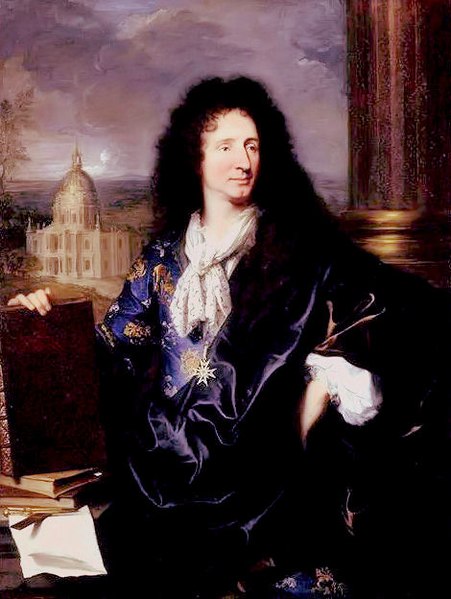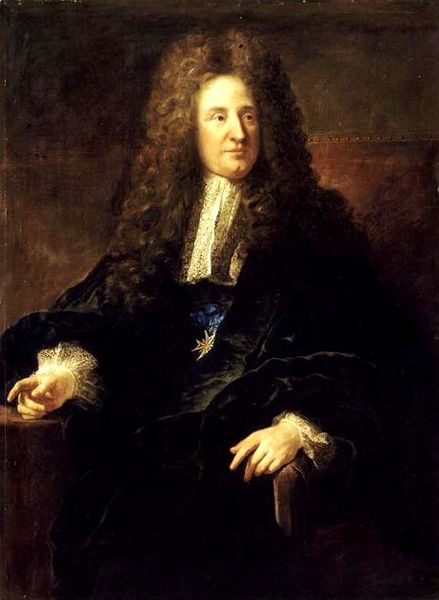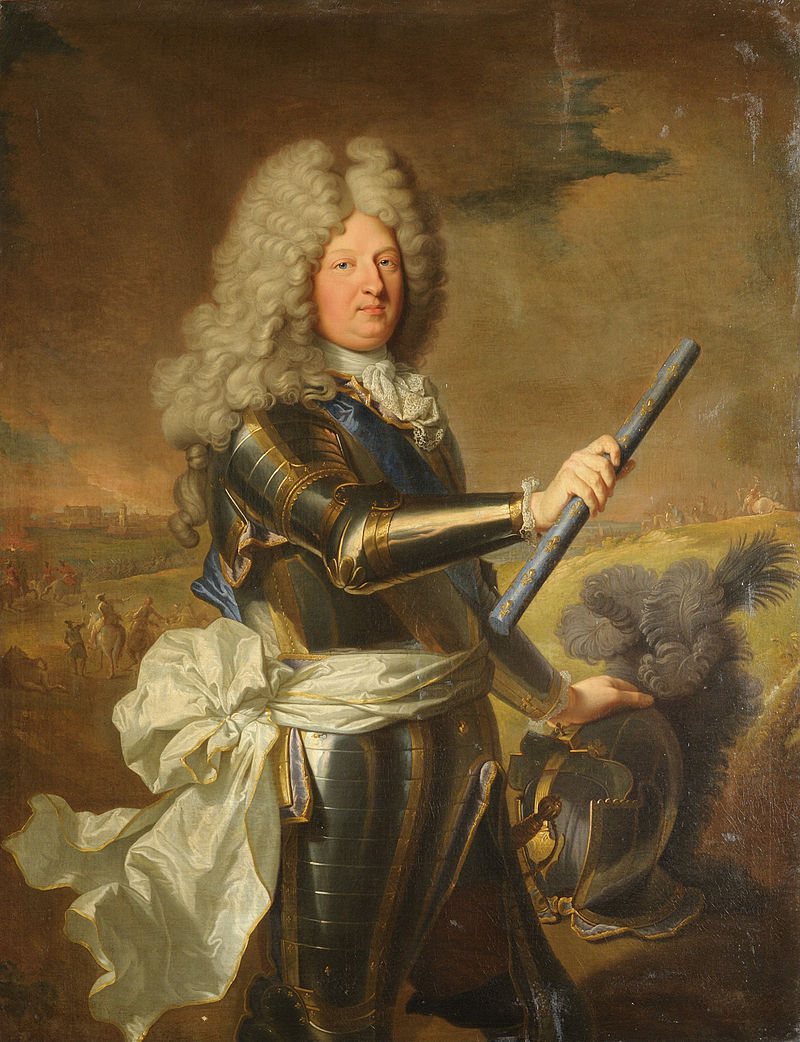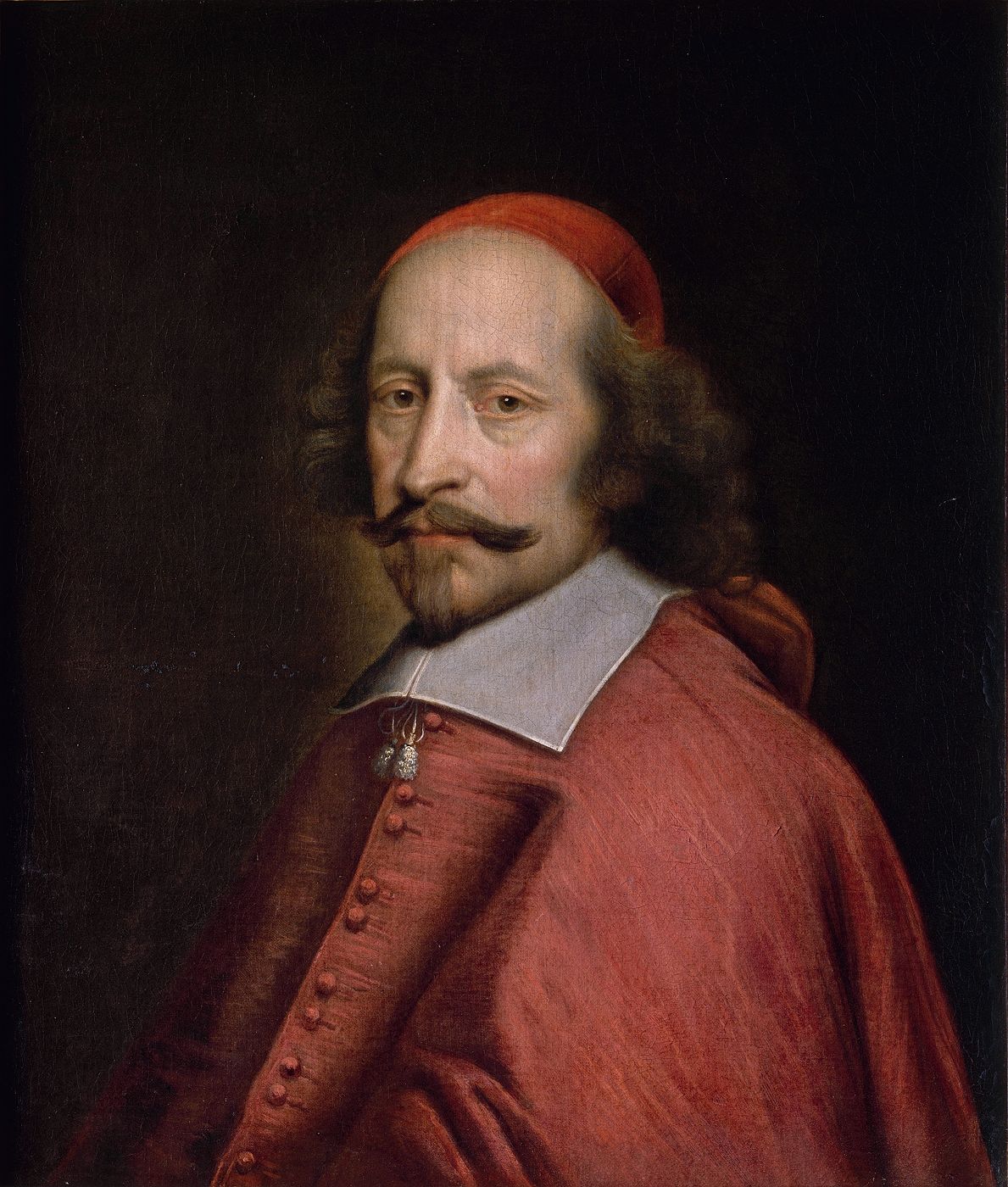Jules Hardouin-Mansart, premier architecte du roi
Born on 16 April 1646 in Paris, Jules Hardouin-Mansart rose to be one of the most famous French architects, whose style was often copied and can still be found in many places all over the world.

Hardouin-Mansart was a great-nephew of the today slightly less famous Nicolas-François Mansart, who had been named architecte du roi in 1625 and was the inventor of the mansarde aka the mansard roof. Nicolas-François Mansart worked on many projects, including churches, Parisian hôtels, and chateaux of royalty and nobility. He managed to remain architecte du roi after the death of Louis XIII and the Regency of Anne d’Autriche. The young Louis XIV was apparently rather fond of him too.
There is a story of Louis XIV walking in the gardens of Versailles with Nicolas-François Mansart in order to discuss building projects. On that day, the sun was burning very hotly and reflected from Mansart’s bald head. Thus Louis removed his hat and offered it to Mansart, which created general confusion among the courtiers. Upon being asked why he did it, Louis drily replied he could make a thousand new Ducs in a single day, but even in thousand years he would not be able to make a single new Mansart.
As much as this Mansart was liked by the King, he was also surrounded by scandal. François was one of the richest not noble folks of the Kingdom, never married and apparently dressed rather fanciful. Instead of a wife, people said, he had several favourites of male gender, also that he bribed people and let others do his job. François had the habit of taking on many projects at the same time, which then led to rising costs and buildings that never seemed to make any progress. But he was an architectural genius and forwarded his knowledge to Jules Hardouin-Mansart.
During the time of his study, Jules Hardouin-Mansart was only Jules Hardouin. He added the Mansart to his name in 1668. Jules also celebrated his marriage in 1668. He married Anne Bodin, with whom he had five children. Around the same time, he began, together with his brother Michel, to work in building construction. Jules quickly noticed that his true love was architecture and not construction, thus he gave the enterprise up in 1672 to focus on a career as architect.
Hardouin-Mansart’s first projects were the town-hall of Nemours, the Petit Hôtel de Conti in Paris and the château de Val. The latter he created in 1674, which was also the year Hardouin-Mansart became a member of the group of architects working for Louis XIV.
At that time, Louis XIV was making merry with Madame de Montespan and this lady of style and pleasure was in need of a worthy château. Jules drew some plans for said château, the château de Clagny, which utterly satisfied Madame de Montespan… and when the mistress is happy, the master is pleased as well. Thus Louis XIV started to look favourably upon this young architect. Jules, now on good terms with Madame de Montespan, also managed to befriend the Marquis de Louvois. He was appointed architecte ordinaire, entered the Académie royale d’architecture, and began to study in all earnest under the guidance of people like André Le Nôtre and Libéral Bruant.

Then Hardouin-Mansart started to work for the King himself at the most prestigious building project of all France. Versailles…. it started out with the bosquet des Dômes in 1677 and the following year it was the galerie des Glaces, then the garden facade, the Petite and Grande Écurie, a new orangery, the Grand Trianon…. the list is long. And those were not the only projects Jules was involved in. He worked at the hôtel des Invalides, the château de Marly, the château de Saint-Germain-en-Laye, the Maison Royale de Saint-Louis, as well as various other chateaux, churches, public places and hôtels.
While working at Versailles in 1678, Jules was made the director of the building project and became the most prominent of royal architects. In 1681, he was then promoted to premier architecte du roi, which means he was the one in charge now. One year later, in 1682, Louis XIV bestowed another favour upon Jules and ennobled him, but Jules did not receive lands and a title. He was thus styled Écuyer.
Hardouin-Mansart’s success was not just due to his ability to create pretty plans for buildings, he was also very skilled with all the administrative work that came with it. Especially in regards of huge projects like Versailles, which involved hundreds of people, from ordinary craftsmen to designers.
Another promotion followed in 1691, as Jules, who had just finished the glorious dome of the Hôtel des Invalides, was made inspecteur général des bâtiments du roi. There he served under Monsieur Villacerf, who was the superintendent, and upon the demise of Villacerf, replaced him as surintendant des bâtiments du roi in 1699.
Jules Hardouin-Mansart died on 11 May 1708 at Marly-le-Roi, with many projects yet unfinished, which were completed by his successors.





